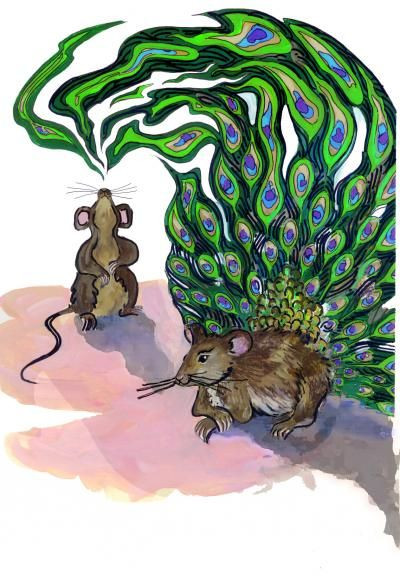Mothers With More Sex Partners Produce More Sexually Desirable Sons (In Mice, At Least)

In mice and men, the sons of more promiscuous mothers may achieve greater mating success with a higher output of chemical mojo: pheromones.
But a fire burning higher and hotter may burn shorter, investigators from the University of Utah say, in findings supporting the “sexy son” hypothesis first proposed by evolutionary biologist Sir Ronald Fisher in 1930. In experiments reported Monday, mother mice freed from the confines of caged monogamy produced sons whose greater output of pheromones helped increase mating output, even though they lived shorter lives, on average, than others.
In essence, the mother’s mating behavior in the mouse barn altered the future expression of genes governing the production of pheromones, changing their progeny on an epigenetic level. Without mutating the gene, processes such as methylation lower the gene’s production of a specific protein, which in turn drives future behavior.
"If your sons are particularly sexy, and mate more than they would otherwise, it's helping get your genes more efficiently into the next generation," lead investigator Wayne Potts, said in a statement. "Only recently have we started to understand that environmental conditions experienced by parents can influence the characteristics of their offspring. This study is one of the first to show this kind of 'epigenetic' process working in a way that increases the mating success of sons."

In the study, investigators placed the offspring of wild mice in either cages enforcing monogamous mating or more free-wheeling “mice barns,” enclosures measuring 22-feet-by-13.5-feet and divided by wire mesh fencing into six sections, over which mice could easily climb. To ensure competitive behavior over territory and mating opportunities, four of the six territories were appropriated with more desirable conditions.
Over the course of ten generations, 23 paired mice were caged in monogamy, with another 20 males and 40 females assigned to the more social condition of the mouse barn, and free to compete.
The “sexy sons” of the barn mice produced significantly more pheromones — nearly a third more — than others whose progenitors led caged monogamous lives. However, only 48 percent of those “sexy sons” survived until the end of the experiments, compared with 80 percent of sons from monogamous mothers in cages. In evolutionary terms, the production of pheromones — secreted in urine and from some glands — is costly.
"Production of pheromones is outrageously expensive," Potts said in the statement. "A single mouse's investment in pheromone production compares with the investment that 10 male peacocks make in the production of their tails, which also are used to attract females."
Heavily dependent on scent, mothers preferred male mice that left scent markings saturated with pheromones, seemingly less concerned with a male’s ability to provide material resources than with genetics conferring later success in the next generation, according to investigator Adam C. Nelson "Pheromones are the language of mice," he said in the statement. "When females mate in a socially competitive environment, they program their sons to have a head start by producing more pheromones."
With regard to implications for study of human evolutionary strategy, science has only begun to “scratch the surface” of how parental experience shapes later children, Potts said. “It’s difficult to predict which and how many traits will be involved.”
To date, some of the best work studying the human mating condition comes from literature — a la John Cheever’s exploration of rituals among socially competitive, and easily bored, suburbanites, to Margaret Mitchell’s Pulitzer-winning Gone With The Wind. So many traits, so many variables comprise the animal model that is the human, with more study to come.
For now, the mice experiments at the very least inform how biologists may better re-release captive animals into the wild, placing greater emphasis on the molecular force known as mojo. The study appeared Monday in the Proceedings of the National Academy of Sciences.
Published by Medicaldaily.com



























